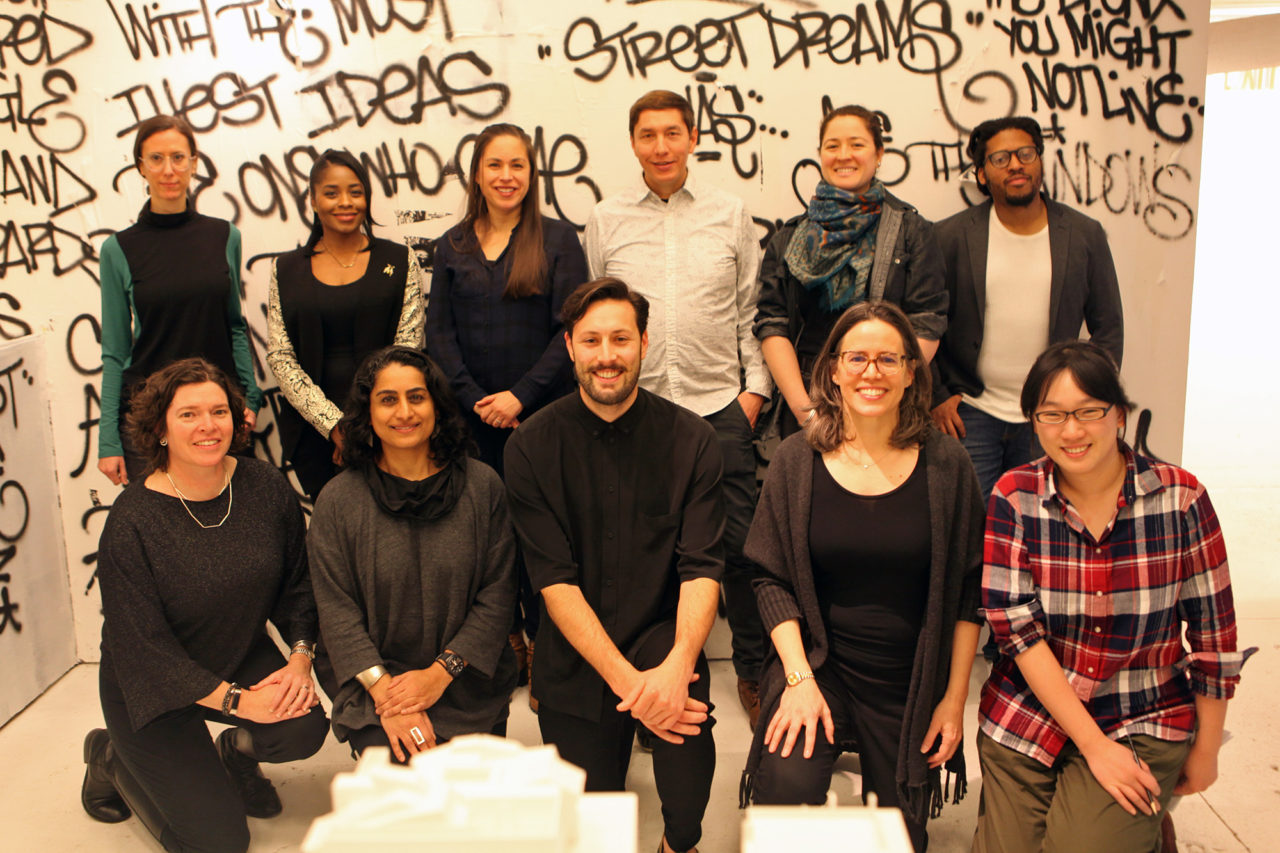-
December 18, 2018Remix, Resample, Remaster: Identity and Making Architecture
 Poets, architects, and other makers discussed how identity influences their work.
Poets, architects, and other makers discussed how identity influences their work.by Kuan-Ju Chen and Jessica Morris
The effects of identity on projects and places are powerful. Should identity be recognized as a material in the discipline of architecture as it is in disciplines like poetry? “Remix Resample Remaster” prompted consideration of whether deeper reflection on the role of identity in the process of making could result in places that are more reflective, adaptive, and flexible.
This participatory program was hosted on 12.11.18 by the AIANY Diversity and Inclusion, Emerging New York Architects, and Social Science and Architecture Committees at the Center for Architecture. Through small-group workshops, participants considered how the work of poets, educators, artists, and fellow architects is affected by their identities both consciously and unconsciously.
Speakers shared short stories that inspired breakout discussions about identity, place, and creative works. Daniel Aronberg, Assoc. AIA and Co-Chair of AIANY Emerging New York Architects Committee, introduced the theme of equality with a reading of the poem “No Difference” by Shel Silverstein. Fauzia Khanani, Assoc. AIA, Principal and Founder of Studio Fōr, then shared excerpts from the New York Times Race/Related Newsletter that illustrated how a porch could represent very different things in people’s lives.
Also among the invited guests was Danei Cesario, AIA, NCARB, NOMA, Associate of Array Architects, and Co-Chair of AIANY Diversity and Inclusion Committee. She highlighted her roles as a mom, a wife, and the 333rd black female licensed architect in American history. With these multiple roles, she has many opportunities to encourage empowerment through practice. Cesario was followed by Paco Márquez, a poet and former editor of OccuPoetry, a poetry journal focused on economic justice. Márquez read two original poems that use language, intentionally-incorrect grammar, and cadence to directly address his identity as a bilingual and Latino immigrant. He also shared a submission tracking spreadsheet showing acceptance or rejection by various journals, allowing the relationship between identity and acceptance to be evaluated. Initially, Márquez’s works were more often accepted by journals aimed at a Latino audience, which caused him to question his professional identity—he did not want to be seen only as a Latino poet. He asked the audience to consider if and when a cultural producer might aspire to break out of identity pigeonholes.
Katie Yamasaki, a Japanese-American artist and muralist who grew up in Detroit, shared a story from grade school that was tied to race, memory, and the writing of history. That story became the inspiration for her children’s books and public artwork, highlighting how formative identity politics can be. Yamasaki’s use of large-scale murals as identity markers serves to reinforce existing relationships, give presence to loved ones who are elsewhere, and create community-building mechanisms. Kamau Ware, artist, historian and founder of Kamau Studios, self-identifies as an information-loving nerd. Ware’s work—walking, talking, sketching, and creating with others he meets—is about the underlying and hidden histories of place. The interest in deep heritage and thirst for information exchange through culture building is the creative force of his identity-driven work, though it is not always obvious at the outset. Finally, Abby Conklin, Program Manager at Creative Connections NYC, shared a poem she authored and asked “How can we see each other wholly?” Conklin echoed Márquez in her lament of stereotyping, which she said is typically based on limited knowledge. Conklin advocated that we suspend judgement and engage in consideration of all sides, especially because every individual is multifaceted.
The subsequent breakout sessions further explored identity as it relates to vocational roles. Each group was led by one of the invited guests, who facilitated discussion after a short self-introduction. Some groups explored the identity of “architect” in general. A few participants were hesitant to call themselves “architects” simply because they were not yet licensed, prompting a discussion of whether young professionals should not feel permitted to identify as such. A few stereotypes of the profession were discussed, such as long working hours and income levels. Though there was agreement that these were a mix of some truth and some speculation, questions arose about how these stereotypes came to be and what might shift them.
Identities can be nested, and their expression may serve as a means to represent and uphold shared visions and values. Identity and expression exist at every moment of practice, from interpreting codes, writing specifications, and outlining material selections, to visioning RFP responses or annotating and placing arrowheads on drawings. Architecture and engineering, technical and creative writing, organizing, and even walking all communicate values.
The group discussions concluded with a series of questions. Everyone was asked to think of a public park that they regularly engaged with and to consider how identity influences one’s experience of that place. Different ideas of how those places might be improved illustrated that identity is an essential starting point in defining architectural problems and working through design solutions. The responses were recorded and later shared back with the full group.
Identity, when harnessed, can be a cultural currency. It is a currency with immeasurable value when shared—not for the purpose of feeding egos, but in service to an economy of common good.
###
This post was sponsored by PLASTARC.
Social Science and Architecture
The Social Science and Architecture Committee was formed in January 2016 with the goal of bringing together professionals and students from architecture, social science, and other fields to discuss, collaborate, and facilitate programs for the community. The meeting offers a place to exchange ideas related to social science and architecture, address topics of interest to the attendees, and to plan AIA panels on related topics. The Committee meets monthly and is open to anyone who would like to attend. Meetings are held the fourth Friday of every month from 8:30–10:00 AM.







